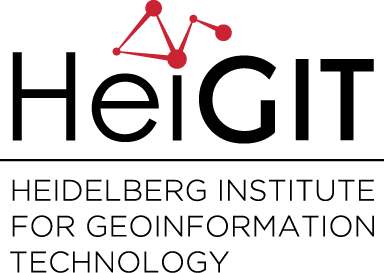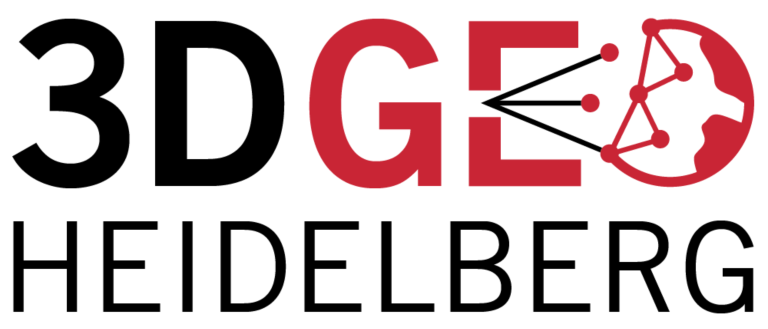Category: Research
-
Visualising GPS data from OpenStreetMap using WebGL
GPS data uploaded to the OpenStreetMap servers is a popular example of what is called Volunteered Geographic Information (VGI). The data has been (and is still) collected by the project contributors primarily to support mapping. As the inclusion of roads and paths in the map is a major goal of the project, the collected GPS…
-
Modeling the evolution of OpenStreetMap with Cellular Automata using a new VGI Contribution Index
Major research efforts have so far dealt with OSM data quality analysis, but the modality of the evolution of OpenStreetMap (OSM) across space and time has been barely noted. Therefore, a new study by Jokar Arsanjani et al. that has recently been accepted for publication in Transactions in GIS aims to analyze spatio-temporal patterns of…
-
Twitter location (sometimes) matters
In contrast to photo-based VGI (e.g. Flickr) the correlation between the place where an information has been created and what the information is about is less intuitive for text-based VGI. In order to gain more insight into the relationship between text information generated in mobile contexts (e.g. via smartphones) and their recorded location, research has…
-
OpenStreetMap and Mapsurfer.NET help to search for missing people
We know many examples when VGI data (e.g., OpenStreetMap, Wikimapia, etc.) help to cope with effects of various humanitarian disasters all over the world. The reason of using open crowd-sourced data is clear. The geographic data are available for free. If, for some reason, data are missing for a specific region, it is not a…
-
GIScience group covered by Rhein-Neckar-Zeitung
Our #mapforaccess mapping party has been covered in yesterdays issue of the local newspaper Rhein-Neckar-Zeitung (~80,000 copies per day in the Rhine-Neckar region). Enjoy reading! (Click to enlarge) Online version here.
-
New paper published: ‘Effects of Reduced Terrestrial LiDAR Point Density on High-Resolution Grain Crop Surface Models in Precision Agriculture.’
We are happy to announce that a new paper with the title Effects of Reduced Terrestrial LiDAR Point Density on High-Resolution Grain Crop Surface Models in Precision Agriculture has been published in the special issue Agriculture and Forestry: Sensors, Technologies and Procedures in the journal Sensors: 3D geodata play an increasingly important role in precision…
-
Digital Earth 2015 – Call for Abstracts, Special Sessions and Workshops
Call for Abstracts, Special Sessions and Workshops Attention scientists, engineers, technologists, environmental managers and other stakeholders in Digital Earth: we welcome your participation in the Digital Earth 2015 Symposium as a presenter, and invite you to submit an Abstract of your proposed oral or poster presentation for consideration. Under the banner “Towards a One-World Vision…
-
Two successfully completed PhDs @ GIScience HD
Last week two colleagues successfully defended their PhDs within the GIScience Research Group at Heidelberg University. The first was the PhD thesis entitled “Exploring and Simulating Spatial Patterns of Urban Growth Using Data-driven and knowledge-based Approaches” by Mr. Hossein Shafeezadeh Moghaddam. The main focus was the development and evaluation of different spatiotemporal modeling strategies for…
-
MUSIEKE – Multidimensional Perceptibility of Cultural Heritage
The newly funded multidisciplinary research project MUSIEKE investigates the perceptibility and visibility of cultural heritage in multiple dimensions in urban, landscape, museum and virtual spaces. Three-dimensional (3D) data acquisition, processing, modeling and web-based visualization & analysis will provide fundamental input to the derivation and explanation of complex causal relationships of cultural heritage in time and…
-
Geographic information analysis and web-based geoportals to explore malnutrition in Sub-Saharan Africa
In our new paper we present a systematic literature review on geographic information analysis and web-based geoportals to explore malnutrition in Sub-Saharan Africa. 563 articles are identified from the searches, from which a total of nine articles and eight geoportals meet inclusion criteria. The review suggests that the spatial dimension of malnutrition is analyzed most…
-
GIScience Heidelberg visit ACM Sigspatial conference
Last week members of the GIScience Research Group were attending the International Conference on Advances in Geographic Information Systems in Dallas. Beside the interesting welcome note given by Luc Vincent talking about the Google Street View project and further follow-up keynote talks, the first conference day was opened up for full day workshops covering various…


